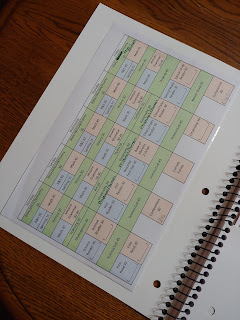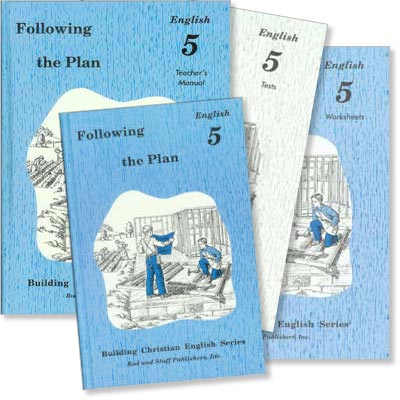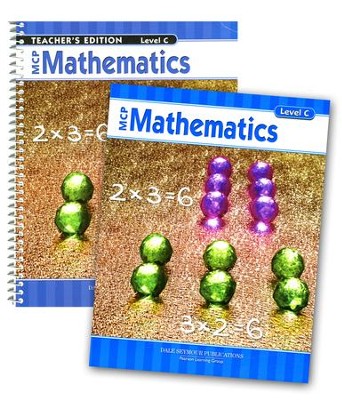My main goal is to cover some gaps in her sciences before starting high school. I wanted something narrative, with occasional experiments, that would fit a "general science" requirement. We all ready covered earth science with living books rather thoroughly during physical geography.
I wasn't to concerned with biology since the plan is for her to take it in 9th grade. However, she is participating in labs this year and I wanted her familiar with the material. So, she's currently reading Tiner's "Biology" book to meet that need, and really enjoying it! The text is interesting and actually covers quite a bit of the major topics.
Since she is already reading biology and scheduled to read physics, I decided to take a look at the rest of Tiner's series. We are adding chemistry and astronomy to the list. I couldn't have asked for anything more perfect. These are short enough to finish over the school year but have the breadth and depth I was looking for!






Turns out, while I was at a library book sale I stumbled across a "Ready-to-use Science Proficiency Lessons and Activities" guide for 8th grade. It has been the perfect addition to round out Tiner's books. After reading some reviews on Amazon, I am pre-reading the worksheets to ensure these do not state anything more than the facts being taught.
This "plan" is evolving as we progress. We've already covered physical/earth science and we are currently covering biology. I will add the other books as we come to them.
8th Grade General Science
Biology
Exploring
the World of Biology, Tiner (14 chapters)
- Beginning classification, plants, fungi, yeasts, molds, pasteurization
- Microscope, simple and complex organisms, paramecium, protozoa, amoeba, euglena, algae, diatoms, bacteria, anaerobic, virus
- Classification System
- Plants, purpose, structure, life span, seeds, spread of seed, vegetative reproduction, spores, photosynthesis
- Food for energy, carbohydrates, glucose molecules, fats, hormones, insulin, proteins
- Digestion process beginning with teeth, through stomach, to small intestine, taste (tongue & taste buds)
- Plant Inventors-Luther Burbank, George Washington Carver, George de Mestral, land stripping, legumes & nitrogen
- Insects, classification, structure, life cycles, Jean Henri Fabre, metamorphosis, Louis Pasteur & silkworm disease
- Arachnids, structure, webs, behavior, molting
- Classification of life in water, fish anatomy, fish respiration, lateral line, Jules Verne, Jacques Cousteau, diving, amphibians-structure & respiration, life cycle
- Reptiles, body temperature, reproduction, snakes-bites, structure, detecting prey, venomous snakes, lizards-structure, life cycle, habitats
- Birds, structure, life cycle, migration, beaks, food, digestion, John Audubon
- Mammals, traits, structure, reproduction, variety in size, carnivores, rodents, cats, sheep, elephants
- Fossils, primitive humans, Darwin, fluorine dating, frauds, hoaxes
Plants- Structure and Function (video)
https://youtu.be/pFaBpVoQD4E
Cellular Respiration (video) https://youtu.be/JEnjph9miK4
Lesson 73: Photosynthesis p. 325-328, Handwerker's book
Cells- Types, Structures, Functions
Prokaryotic
Cells vs. Eukaryotic Cells-
Amoeba Sisters(video) https://youtu.be/Pxujitlv8wc
Introduction to
Cells: The Grand Cell Tour
Amoeba Sisters (video) https://youtu.be/8IlzKri08kk
Cell Structure (CGI) https://youtu.be/URUJD5NEXC8
Identify
and Color animal and plant cell structures
worksheet from TpT
Complete Cell Structure worksheet Les.
75 in Handwerker’s book
Cell Division: Mitosis-
Amoeba Sisters (video) Mitosis https://youtu.be/f-ldPgEfAHI
Complete Mitosis Les. 76 worksheet in
Handwerker’s book
Cell Types & Cell Theory-
Specialized
Cells: Significance, Examples, Organization
Amoeba Sisters video https://youtu.be/wNe6RuK0FfA
Read Specialized Cells
Complete Body Cell Matching sheet and add to notebook
Levels of Organization “Cornell Notes” presentation (read
slides 3-12)
Labs Completed w/Co-op (Apologia)
Mod 1/Exp 1.2 Introduction
to a Compound Microscope
Mod 2/Exp 2.2 Kingdom Monera: Pond
Life B
Mod 3/Exp 3.1 Kingdom Protista: Pond Life C
Mod 3/Exp 3.2 Subkingdom Protozoa: A & C
Mod 3/Exp 3.3 Subkingdom Algae: B
Mod 4/Exp 4.2 Yeast and the Fermentation Process
Mod 6/Exp 6.1 Animal Cell Anatomy
Mod 7/Exp 7.2 Mitosis
Big Bang, Fossil Record, Evolution, & Natural
Selection
This has been the hardest topic to cover for my middle schooler. I found some short video clips (longest is 4 minutes) and articles for her to read. I have to keep reminding myself this is introduction only and that she will cover these topics more in-depth later in high school.
This has been the hardest topic to cover for my middle schooler. I found some short video clips (longest is 4 minutes) and articles for her to read. I have to keep reminding myself this is introduction only and that she will cover these topics more in-depth later in high school.
- A Big Bang - ICR
- Why Shoudn't Christians Accept Millions of Years? - AIG
- Young Universe - ICR
- Dinosaurs & Humans - ICR
- Catastrophe- AIG flood, dinosaurs, ice age
- Global Flood - ICR
- Ice Age - ICR
- Fossil Record- ICR video (sudden appearance/stasis)
- Cambrian Explosion - ICR
- Whale Evolution - ICR
- Carbon Dating - ICR
- Cell Origins - ICR
- Chimp DNA - ICR
- Scopes Trial - AIG
- Missing Links in Evolution ICR
- Natural Selection - AIG
- Natural Selection -ICR
- Evolving Bacteria - ICR
- Evolution in Action? - ICR
I will continue to edit and add to this post as we progress in our year....





















